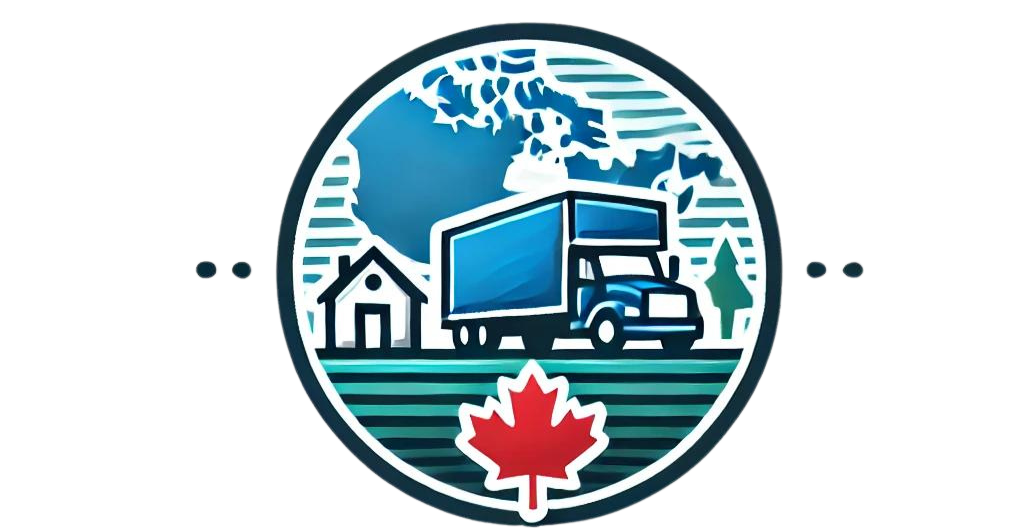Moving From Toronto To San Diego
Are you considering a move from the vibrant city of Toronto to the sun-kissed beaches of San Diego? If so, you're not alone. Many Canadians are drawn to the allure of Southern California's warm climate, stunning natural beauty, and relaxed lifestyle. But before making the leap, it's essential to understand the significant differences between these two cities. From cost of living and job opportunities to cultural and lifestyle adjustments, there's much to consider. In this article, we'll explore the key factors to help you make an informed decision about moving from Toronto to San Diego.

Embracing the Sun: A Comprehensive Guide to Moving from Toronto to San Diego
Are you considering making the move from Toronto to San Diego? If so, you're not alone. Many Canadians are drawn to San Diego's warm climate, stunning beaches, and outdoor lifestyle. However, relocating to a new city can be a daunting task, especially when crossing the border. In this guide, we'll provide you with essential information to help you navigate the process of moving from Toronto to San Diego.
Understanding the Cost of Living
One of the significant differences between Toronto and San Diego is the cost of living. San Diego has a higher cost of living, especially when it comes to housing and transportation. Here are some key costs to consider:
| Category | Toronto | San Diego |
|---|---|---|
| Rent (1-bedroom apt) | $1,800 - $2,500 | $2,500 - $3,500 |
| Food (meal at mid-range restaurant) | $15 - $25 | $20 - $35 |
| Transportation (gasoline, insurance, maintenance) | $500 - $700 | $700 - $1,000 |
Obtaining the Necessary Visas and Documents
As a Canadian, you'll need to obtain the necessary visas and documents to live and work in the United States. The most common visa options for Canadians moving to San Diego include: TN visa: For professionals, such as engineers, lawyers, and doctors, who have a job offer in the US. H-1B visa: For specialty occupations, such as IT professionals, nurses, and teachers. L-1 visa: For intracompany transfers or executives. Green card: For permanent residency.
Finding a Place to Live
San Diego has many diverse neighborhoods to choose from, each with its unique character and charm. Some popular areas for Canadians include: La Jolla: Upscale neighborhood with high-end shopping and dining. Pacific Beach: Beachside neighborhood with a laid-back atmosphere. North Park: Trendy neighborhood with a mix of old and new homes. Carlsbad: Family-friendly neighborhood with good schools and parks.
Job Opportunities and Career Development
San Diego has a strong economy, with major industries in: Biotechnology: With numerous research institutions and companies, such as the University of California, San Diego and Biogen. Telecommunications: With companies like Qualcomm and Ericsson. Tourism: With its beautiful beaches and attractions, San Diego's tourism industry is thriving.
Healthcare and Insurance
As a Canadian, you may be accustomed to a publicly-funded healthcare system. In the US, healthcare is primarily private, and you'll need to secure health insurance to access medical services. Some popular insurance providers in San Diego include: Blue Cross Blue Shield Kaiser Permanente UnitedHealthcare Remember to research and compare plans to find the best coverage for your needs and budget.
Is San Diego cheaper than Toronto?

San Diego, California, and Toronto, Ontario, are two popular cities in North America that offer distinct lifestyles and costs of living. While both cities have their advantages and disadvantages, San Diego is generally considered to be cheaper than Toronto.
Cost of Housing
One of the most significant factors contributing to the difference in cost of living between San Diego and Toronto is housing. The cost of housing in Toronto is higher compared to San Diego. According to data from Zillow, the median home value in San Diego is around $640,000, while in Toronto, it's around $1,040,000. Here are some approximate costs of different types of housing in each city:
- Studio apartment in San Diego: $1,300 - $1,800 per month
- 1-bedroom apartment in San Diego: $1,600 - $2,500 per month
- 3-bedroom house in San Diego: $2,500 - $4,000 per month
- Studio apartment in Toronto: $1,800 - $2,500 per month
- 1-bedroom apartment in Toronto: $2,200 - $3,500 per month
- 3-bedroom house in Toronto: $4,000 - $6,000 per month
Food and Transportation Costs
Another area where San Diego is generally cheaper than Toronto is food and transportation. Eating out in San Diego can be relatively affordable, with the average cost of a meal at a mid-range restaurant being around $15 - $20 per person. In contrast, the average cost of a meal at a mid-range restaurant in Toronto is around $20 - $30 per person. Here are some approximate costs of food and transportation in each city:
- Fast food meal in San Diego: $6 - $8
- Mid-range restaurant meal in San Diego: $15 - $20
- Groceries in San Diego: $80 - $120 per week
- Monthly public transportation pass in San Diego: $72
- Fast food meal in Toronto: $8 - $12
- Mid-range restaurant meal in Toronto: $20 - $30
- Groceries in Toronto: $120 - $180 per week
- Monthly public transportation pass in Toronto: $156
Taxes and Healthcare
Taxes and healthcare are two areas where San Diego and Toronto differ significantly. San Diego has a lower sales tax rate (7.75%) compared to Toronto (13%). Additionally, California has a more progressive income tax system, which means higher-income individuals may pay a higher tax rate. Here are some approximate costs of taxes and healthcare in each city:
- Sales tax rate in San Diego: 7.75%
- Top marginal income tax rate in San Diego: 13.3%
- Average health insurance premium in San Diego: $400 - $600 per month
- Sales tax rate in Toronto: 13%
- Top marginal income tax rate in Toronto: 15.02%
- Average health insurance premium in Toronto: $600 - $800 per month
Is it a good idea to move to San Diego?

San Diego is a popular destination for many reasons, but whether it's a good idea to move there depends on various factors, including your personal preferences, lifestyle, and priorities. Here are some points to consider:
Pros of Moving to San Diego
San Diego offers a unique combination of year-round mild climate, beautiful beaches, and outdoor recreational opportunities. Here are some benefits of moving to San Diego:
- Perfect weather: San Diego's climate is characterized by mild winters and warm summers, making it ideal for people who enjoy outdoor activities throughout the year.
- Beach lifestyle: With over 70 miles of coastline, San Diego offers a range of beaches, from bustling Mission Beach to secluded La Jolla Cove, catering to different tastes and preferences.
- Outdoor activities: San Diego's proximity to the Pacific Ocean, mountains, and deserts makes it an excellent base for outdoor enthusiasts, with opportunities for surfing, hiking, and camping.
Cons of Moving to San Diego
While San Diego has many advantages, it's essential to consider the following drawbacks:
- High cost of living: San Diego has a higher cost of living compared to other parts of the United States, with steep housing costs, taxes, and living expenses.
- Traffic and congestion: San Diego's popularity and growing population have led to increased traffic and congestion, making commuting time-consuming and frustrating.
- Competition for jobs: San Diego's job market is competitive, with many industries, including biotech and telecommunications, experiencing high demand and limited job opportunities.
Things to Consider Before Moving to San Diego
Before making the move, consider the following factors to ensure San Diego is the right fit for you:
- Job opportunities: Research the job market in your industry and ensure there are sufficient job opportunities with competitive salaries and benefits.
- Housing and neighborhoods: Explore different neighborhoods, such as North Park, La Jolla, and Pacific Beach, to find a suitable area that fits your budget and lifestyle.
- Lifestyle and priorities: San Diego's laid-back atmosphere might not be suitable for everyone. Consider your priorities, such as career advancement, education, or family needs, and ensure San Diego aligns with your goals.
How to move from Canada to California?

Moving from Canada to California can be a complex process, but with the right guidance, it can be a smooth transition. Here's a step-by-step guide to help you make the move:
Obtaining the Necessary Documents
Before making the move, you'll need to obtain the necessary documents to enter and live in the United States. Green Card, Visa, and Passport are the essential documents required for immigration. You can apply for these documents through the U.S. Citizenship and Immigration Services (USCIS) website or consult with an immigration lawyer.
- Check your eligibility for a Green Card or Visa
- Gather required documents, such as proof of income, education, and employment
- Submit your application and wait for processing
Finding a Place to Live
California is a large state with many beautiful cities and towns to choose from. Research, networking, and planning are key to finding the right place to live. Consider factors such as cost of living, job opportunities, and proximity to family and friends.
- Research different cities and neighborhoods in California
- Network with friends, family, and colleagues who live in California
- Plan a trip to California to explore different areas
Job Opportunities and Finances
Job opportunities, finances, and health insurance are crucial aspects to consider when moving to California. You may need to transfer your job, find a new one, or start your own business. Additionally, understand the cost of living in California and plan your finances accordingly.
- Research job opportunities in your field and apply before making the move
- Understand the cost of living in California and create a budget
- Research health insurance options in California
What time of year is best to move to San Diego?

The best time to move to San Diego largely depends on personal preferences and priorities. However, considering various factors such as weather, housing, and lifestyle, here's a breakdown of the city's climate and events throughout the year:
Weather Conditions
San Diego's climate is characterized by mild winters and warm summers. The best time to move in terms of weather is from September to November or from March to May. These periods offer pleasant temperatures, averaging 71°F (22°C), making it ideal for outdoor activities and settling into a new home. During these times, you can enjoy:
- Mild temperatures, perfect for outdoor exploration and house hunting
- Low humidity, reducing the risk of weather-related stress
- Abundant sunshine, with an average of 284 days of sun per year
Housing and Rentals
If you're looking for a more affordable option, consider moving to San Diego during the off-season, from December to February. This period typically sees a decrease in housing prices and rental rates, making it a good time to find a place to live. Keep in mind:
- Lower rental prices, averaging 10-15% less than peak season rates
- Fewer renters, reducing competition for available properties
- More time to find the perfect place, with less pressure from other renters
Events and Festivals
San Diego hosts various events and festivals throughout the year, which can impact traffic, parking, and accommodation prices. If you want to avoid the crowds and chaos, consider moving during the less busy periods. However, if you enjoy festivals and events, plan your move around:
- San Diego Comic-Con International, a popular event in July
- La Jolla Art and Wine Festival, a cultural event in October
- San Diego Pride, a vibrant parade and festival in July
FAQ
What are the main differences I can expect between living in Toronto and San Diego?
When considering a move from Toronto to San Diego, it's essential to understand the significant differences between these two cities. One of the most notable differences is the climate. San Diego boasts a Mediterranean climate, characterized by mild winters and warm summers, with an average temperature of 71°F (22°C). In contrast, Toronto experiences a humid continental climate, with cold winters and warm summers, with an average temperature of 45°F (7°C). Another significant difference is the cost of living. San Diego is known for being one of the more expensive cities in the United States, while Toronto is generally more affordable. Additionally, the culture and lifestyle in San Diego are often more relaxed and casual, with a strong emphasis on outdoor activities, whereas Toronto is a bustling metropolis with a more fast-paced lifestyle.
How do I go about finding a place to live in San Diego?
Finding a place to live in San Diego can be a challenging task, especially for those who are new to the city. The first step is to research different neighborhoods, such as La Jolla, North Park, and Downtown San Diego, to determine which area best fits your needs and budget. Consider factors such as commute time, school districts, and safety when making your decision. You can also work with a realtor or use online resources, such as Zillow or Redfin, to find apartments or houses for rent or sale. Be prepared to act quickly, as the San Diego housing market is highly competitive.
What are the job prospects like in San Diego, and how do they compare to Toronto?
San Diego has a thriving economy, with a strong presence of industries such as biotechnology, telecommunications, and tourism. The city is also home to a growing startup scene, with many tech companies and incubators. While Toronto has a more diverse economy, with a stronger presence of finance and manufacturing industries, San Diego offers a more relaxed business environment and a higher quality of life. However, the job market in San Diego can be competitive, and it's essential to network and have a strong online presence to increase your chances of finding a job.
What kind of documentation do I need to move from Toronto to San Diego?
Moving from Toronto to San Diego requires careful planning and attention to detail, particularly when it comes to immigration documentation. As a Canadian citizen, you may be eligible for a TN visa, which allows you to work in the United States under the North American Free Trade Agreement (NAFTA). You'll need to provide documentation, such as a passport, birth certificate, and proof of education, to support your visa application. Additionally, you may need to obtain an Individual Taxpayer Identification Number (ITIN) and register with the US Social Security Administration. It's recommended that you consult with an immigration attorney to ensure a smooth transition.
